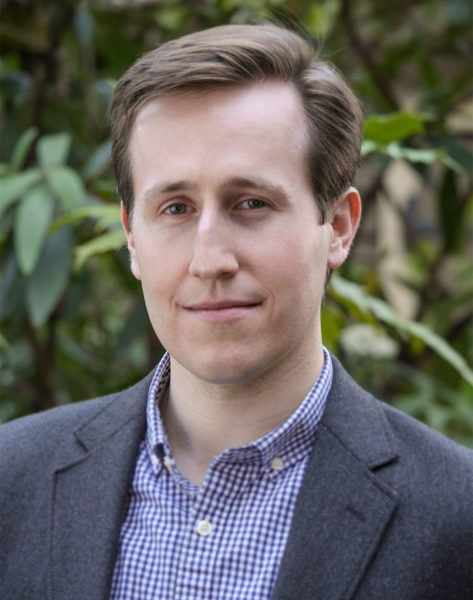Progressive Voice is a weekly opinion column. The views and opinions expressed in this column are those of the individual author and do not necessarily reflect the views of their organization or ARLnow.com.
 Growing up in Arlington, my friends’ parents were entrepreneurs, artists, public servants, homemakers, lawyers, and service workers. In the past 30 years, I have seen Arlington change, largely for the better.
Growing up in Arlington, my friends’ parents were entrepreneurs, artists, public servants, homemakers, lawyers, and service workers. In the past 30 years, I have seen Arlington change, largely for the better.
But as property values rise I wonder: “If I could buy in Arlington (that’s a big if) and raise a family here, will my children grow up in an economically diverse and largely middle class community?”
Continuing on our present course, I fear not.
Over the past several months I’ve written here and elsewhere about millennials and housing affordability in Arlington. How do we make home ownership attainable for young people? Our answer will affect Arlington’s prosperity and culture for decades to come.
Some millennials will earn well above the area median income (AMI) and have ample choices in Arlington. Others will earn well below AMI. For them, ownership here may be out of reach. To its credit, Arlington works hard to provide affordable rental housing.
The challenge is what to do for the majority of millennials who fall in between.
When my mother settled here, artists, budding entrepreneurs, and public servants could afford Arlington. With the median sale price of a “home” (detached dwellings, townhouses, and condos) now above $550,000, many find Arlington out of reach.
If ownership is unattainable to this group, they will move to more affordable urban centers. We will lose civic and artistic contributors and a significant share of a creative class that is critical to growing and diversifying our economy. Left behind will be a stratified county increasingly reliant on federal largesse.
In July 2012, Arlington initiated an Affordable Housing study. The resulting March 2015 draft plan found ownership housing affordable to families earning below 120 percent AMI “will continue to be undersupplied without public policies to stimulate and incentivize the production of lower cost ownership housing.”
In response, planners have suggested increasing the supply of affordable housing, raising density, and studying options to “enable greater flexibility in housing type.” This is promising. But to more quickly match today’s demand with existing supply, the County should also look to innovative financing options.
Upfront costs are a significant barrier to homeownership. Having graduated into a sluggish economy and saddled with student debt, few millennials have $110,000 in cash (20 percent of a median-price home).
That’s why “shared-equity” programs show significant promise.
In a shared-equity program, first-time homebuyers can get a deferred-payment, no-interest loan to partially cover down payment and closing costs. The buyer can defer payments until they sell. They then repay the original loan plus a proportionate share of the home’s net appreciation. This turns renters into buyers, helping them to build equity while putting down roots in the community. The fund is self-sustaining, refreshed with repayments and appreciation.
Arlington already has a similar program: the Moderate Income Purchase Assistance Program (MIPAP). But in FY 2014, just 14 MIPAP loans were made, up from three in the prior two years.
That’s partly because the maximum purchase price of an eligible home is $362,790, far less than the Arlington median, although the maximum allowed loan — $90,000 — and the minimum contribution required of the buyer — 1 percent — are quite helpful.
To improve MIPAP, we need to increase funding for homeownership programs. Funds to support MIPAP shouldn’t come out of support for low-income families, but rather reflect a strong commitment to both affordable housing and housing affordability.
Second, raising the cap would make more homes eligible for the program. As of 2012, just 12 percent of Arlington homes were worth $300,000, whereas almost 26 percent were worth between $300,000 and $500,000.
Third, put the maximum loan amount and minimum required contribution on a sliding scale. As a buyer’s income and assets grow, the loan shrinks and required contribution grows. In this way, the county can at once make home-ownership more attainable while leveraging public dollars with private investment.
Arlington needs to attract and retain young professionals to sustain and build upon its economic success. Housing affordability is key to that outcome.
We want to encourage longer term commitments to our community, including home ownership, that help boost educational and health outcomes, lower crime rates, increase civic and volunteer activity, and promote a sense of belonging and accomplishment.
In July, the County Board will vote on a new Affordable Housing Master Plan. To make your voice heard in this debate, visit Open Arlington and take the affordable housing survey. Let them know that county support for affordable housing matters, as does the expansion of ownership assistance.
Harrison Godfrey is a life-long Arlington resident and Democratic precinct captain for the Lyon Park neighborhood. A graduate of William & Mary and former White House legislative aide, Harry works on clean-tech policy at the state and federal levels.


